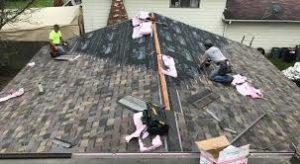If your roof is old or leaking, you may need to replace it. Roofing replacement is not a cheap proposition. The cost of a new roof varies depending on the location of your house, the size of your roof, and the materials used. However, there are some factors that you can control and reduce the cost of a new roof. Click on roof replacement

First, check for water spots on your ceiling. If you notice any, call a roofing contractor to inspect your roof. Often, these leaks occur along the flashing of your roof. They are usually not visible to the naked eye, but if you notice them regularly, they may be a sign of severe damage.
The second option is reroofing, also called overlaying, which involves installing a new roof over the old one. This method allows you to save money upfront, and does not require tearing off your old roof. However, it is more expensive than full replacement, and you won’t get the same material prices as with a full replacement.
If your roof is in good condition, you may only need minor repairs. If you find some bad wood, it is important to replace it with 1×6 or plywood sheathing boards. You may need to get a loan or work out a payment plan with your roofing contractor. However, you need to make sure that you know what to expect from the process.
A new roof replacement begins by getting the right materials to your house. A qualified roofing company will inspect your roof before completing the job, and provide an estimate and contract. Once you agree to a price, the contractor will order the materials and schedule the work. The crew will arrive on time and tear off the old roof.
The cost of a roof replacement depends on its size and type. The average cost for a new roof on a 1,000 square-foot house ranges from $4,000 to $5,500. However, a 3,000-square-foot house can cost upwards of $16,000. This price range includes permits, materials and labor.
While an asphalt shingle roof is the most affordable option, metal or tile roofs can be more expensive. However, these roofs last longer than asphalt shingles and are more energy-efficient. In addition, they’re visually attractive. But, there are disadvantages, including the fact that they’re more vulnerable to wind and falling debris.
In addition to the main shingle, a roof also has several layers of protection. Those layers include starter shingles. These shingles go underneath the main shingle and are essential to keeping water and debris from entering your home. In addition to preventing leaks, they also direct water into gutters and downspouts.
Depending on the damage to your roof, you may need re-roofing. A new layer of shingles may be necessary. However, a second layer of shingles can make the roof too heavy and require removal.
